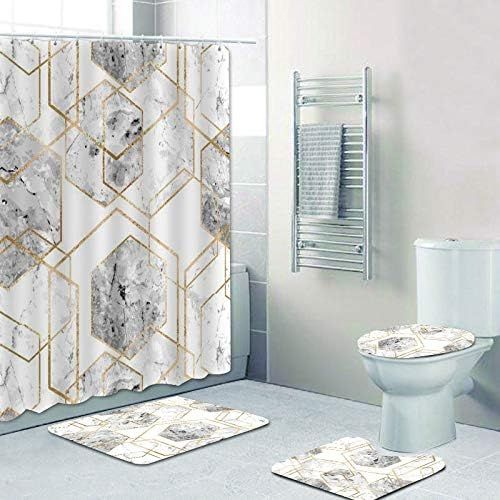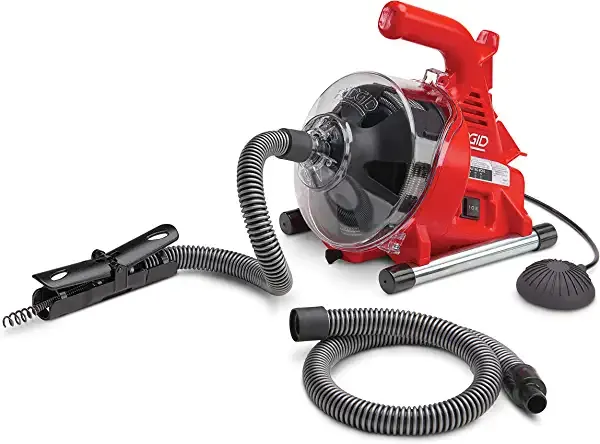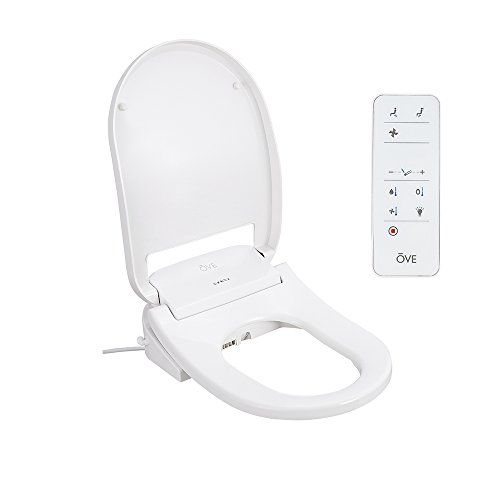How A Toilet Fill Valve Works of 2025
A powerful, energy-efficient ventilation fan can help keep your bathroom fresh and free from moisture and mold. Look for models with quiet, powerful motors and easy-to-use controls. The ventilation fan should fit your bathroom space and be easy to install. Consider the noise level and air flow rate to match your needs.
A properly functioning toilet is essential in every household, and one of its most crucial components is the fill valve. If you've ever experienced a toilet that constantly runs or doesn’t refill properly, the fill valve might be the culprit. Understanding how a toilet fill valve works can help you diagnose issues, make repairs, or simply enhance your knowledge of how toilets function.
In this detailed guide, we'll walk you through the inner workings of a toilet fill valve, including the different types available, how they operate, common problems, and tips for maintenance. Whether you're a homeowner, DIY enthusiast, or just curious, this article will help you grasp how a toilet fill valve works.
What Is a Toilet Fill Valve?
Before diving into how a toilet fill valve works, let’s define what it is. A toilet fill valve is the component responsible for refilling the toilet tank with water after each flush. It regulates the water level in the tank and ensures the toilet bowl is ready for the next flush. The fill valve connects to the water supply line and, when activated, opens to allow water to flow into the tank.
Types of Toilet Fill Valves
To fully understand how a toilet fill valve works, it’s important to recognize the different types of valves available. While they all serve the same function, they may differ in design and operation.
-
Ballcock Fill Valve
This is one of the older designs. It uses a long rod attached to a float ball, which rises and falls with the water level in the tank. When the water level drops after a flush, the float ball drops as well, triggering the fill valve to open and refill the tank. Once the water reaches the desired level, the float ball rises, shutting off the valve. -
Float Cup Fill Valve
More common in modern toilets, this design uses a cylindrical float that moves up and down with the water level. The float is attached to the fill valve via a vertical rod. As the water level decreases, the float moves down, causing the valve to open. When the water reaches the correct level, the float rises, and the valve shuts off. -
Diaphragm Fill Valve
Found in older European-style toilets, diaphragm fill valves use a rubber diaphragm to control the flow of water. When the tank empties, the diaphragm opens to let water in. As the tank fills, the diaphragm closes, stopping the water flow. -
Plunger or Piston Fill Valve
This type uses a plunger or piston mechanism to control water flow. It’s less common than the float cup or ballcock systems but functions similarly in regulating water levels.
How Does a Toilet Fill Valve Work?
Now that we’ve covered the types of toilet fill valves, let’s dive into the step-by-step process of how a toilet fill valve works.
-
Flushing the Toilet
When you press the flush lever, the flush valve at the bottom of the tank opens, allowing water to rush into the bowl. This creates a siphon effect, which pushes waste through the toilet’s drain pipe. -
The Water Level Drops
As the tank empties, the water level drops, causing the float (either a float ball or float cup) to descend. This triggers the fill valve to open. -
Refilling the Tank
Once the fill valve opens, water begins flowing into the tank from the water supply line. The valve stays open as long as the float remains low. -
Water Reaches the Desired Level
As the tank fills, the float rises. Once the water reaches the set level, the float activates the mechanism that shuts off the fill valve, stopping the flow of water. This process ensures that the tank does not overfill and water is conserved. -
Maintaining the Water Level
After the fill valve shuts off, a small amount of water is usually directed into the toilet bowl via an overflow tube to ensure it stays at the correct level. This also prevents sewer gases from entering the bathroom by maintaining a water barrier in the trap
Common Toilet Fill Valve Problems
Like any mechanical part, toilet fill valves can experience wear and tear over time. Understanding how a toilet fill valve works can help you recognize and troubleshoot common issues, such as:
-
Toilet Runs Continuously
If the toilet keeps running after the tank is full, the fill valve may be malfunctioning, or the float could be improperly adjusted. A misaligned float can prevent the fill valve from shutting off completely, causing water to keep flowing. -
Slow Filling Tank
If the tank takes a long time to fill, there could be a blockage or mineral buildup in the fill valve or the water supply line. This reduces the flow of water and prolongs the refilling process. -
Noisy Toilet
A whistling or humming noise during the refill cycle is often a sign of a faulty or worn-out fill valve. Replacing the valve is usually the best solution. -
Water Leaking from the Fill Valve
If you notice water leaking from the fill valve or around its connections, it could be due to worn seals or loose fittings. Tightening connections or replacing parts may resolve the issue.
How to Maintain a Toilet Fill Valve
Proper maintenance is key to extending the life of your toilet fill valve and ensuring it works efficiently. Here are a few tips to help keep your fill valve in good condition:
-
Clean the Fill Valve Regularly: Mineral deposits and debris can build up in the fill valve over time, restricting water flow. Cleaning the valve periodically will help maintain proper function.
-
Adjust the Float: If your toilet frequently runs or doesn’t fill properly, adjusting the float level can often resolve the issue. The float should be set so that the tank fills to the waterline mark without overflowing.
-
Replace Worn Parts: Over time, parts of the fill valve may wear out or become damaged. Replacing these components as needed will prevent leaks and other issues.
-
Check for Leaks: Regularly inspect the connections between the fill valve and the water supply line for any signs of leaks. Tighten connections or replace parts as necessary.
Replacing a Toilet Fill Valve
If your toilet fill valve is beyond repair, replacing it is a straightforward process that can be done with basic tools. Here’s a general guide:
-
Turn Off the Water Supply
Start by shutting off the water supply to the toilet, usually by turning the valve located near the base of the toilet. -
Drain the Tank
Flush the toilet to empty the tank. You may need to use a sponge or towel to remove any remaining water. -
Remove the Old Fill Valve
Disconnect the water supply line from the fill valve, then remove the valve from the tank by unscrewing the lock nut. -
Install the New Fill Valve
Insert the new fill valve into the tank and secure it with the lock nut. Reconnect the water supply line and adjust the float to the correct height. -
Turn On the Water and Test
Turn the water supply back on and test the new fill valve to ensure it works properly.
Final Thoughts on How a Toilet Fill Valve Works
Understanding how a toilet fill valve works is essential for anyone who wants to troubleshoot toilet issues, perform basic repairs, or simply learn more about their plumbing. By knowing the key components and the role of the fill valve, you’ll be better equipped to handle common toilet problems.
If your toilet experiences continuous running, slow filling, or noise during refilling, the fill valve is likely the cause. By maintaining, adjusting, or replacing the fill valve when needed, you can ensure your toilet remains in optimal working condition.
Remember, whether you're fixing a problem or just maintaining your plumbing, understanding how a toilet fill valve works will save you time, money, and frustration.
Compare Products
1. Fluidmaster 242 Toilet Fill Valve Seal Replacement Part, Fits 400A
- Extend the life of your 400A toilet fill valve.
- Easy-to-install. more
2. Fluidmaster 400H-002 Performax Universal Toilet Fill Valve High Performance Tank
- Fix noisy, or slow filling fill valves with the quietest, most powerful toilet fill valve available
- Easy to install, step-by-step instructions included more
3. R&T A1320 Toilet Fill Valve Toilet Tank Parts Replacement Running
- 【Enhance Your Toilet's Performance】Fix no/slow filling, noisy, leaking, running toilets. Provide a quiet and quick tank filling. Replacement of old R&T A1260 fill valve.
- 【Water Saving Toilet Tank Parts】The fill valve delivers right amount of water to the tank to maintain good performance, saves water and reduces your bill. more
4. Korky 528MP QuietFILL Platinum Fill Valve-Fits Most Toilets-Easy to Install-Made
- UNIVERSAL FILL VALVE: This toilet fill valve replaces ballcocks & worn down valves for different types of 2-piece & 1-piece toilets. It's easy to install & keeps your toilet running smoothly.
- EASY TO INSTALL: Quiet replacement fill valve has a twist-lock adjustment that makes installation the easiest when you're doing toilet repairs. Adjustable from 7.75'' to 13.5.'' more
5. R&T A1250L Toilet Fill Valve Toilet Tank Parts Replacement Running
- 【Enhance Your Toilet's Performance】Fix no/slow filling, noisy, leaking, running toilets. Provide a quiet and quick tank filling. Replacement of old R&T A1260 fill valve.
- 【Water Saving Toilet Tank Parts】The fill valve delivers right amount of water to the tank to maintain good performance, saves water and reduces your bill. more
- BBR Score9.4
BBR Score is a ranking system developed by bestbathroom.guide. Score has no relationship or impact from any manufacturers or sales agent websites. Learn more
- BrandFluidmaster
- BBR Score9.2
BBR Score is a ranking system developed by bestbathroom.guide. Score has no relationship or impact from any manufacturers or sales agent websites. Learn more
- BrandFluidmaster
- BBR Score9.0
BBR Score is a ranking system developed by bestbathroom.guide. Score has no relationship or impact from any manufacturers or sales agent websites. Learn more
- BrandCORINTH
- BBR Score9.0
BBR Score is a ranking system developed by bestbathroom.guide. Score has no relationship or impact from any manufacturers or sales agent websites. Learn more
- BrandKorky
- BBR Score8.8
BBR Score is a ranking system developed by bestbathroom.guide. Score has no relationship or impact from any manufacturers or sales agent websites. Learn more
- BrandR&T
Last update on 2025-04-14 / Affiliate links / Images, Product Titles, and Product Highlights from Amazon Product Advertising API
Noise Level
Some bathroom products can be noisy, such as exhaust fans or toilets with loud flushing mechanisms. Consider the noise level of each product and look for options that are quieter.
Eco-friendliness
Consider the environmental impact of the products you choose. Look for products that are made from sustainable materials or that have eco-friendly features, such as water-saving technology.
Conclusion
Whether you're working with a small space or simply want to maximize your storage options, there are plenty of bathroom products available that can help you make the most of your space. From compact vanities to over-the-toilet storage, there are plenty of ways to keep your bathroom organized and clutter-free.













.jpg)








